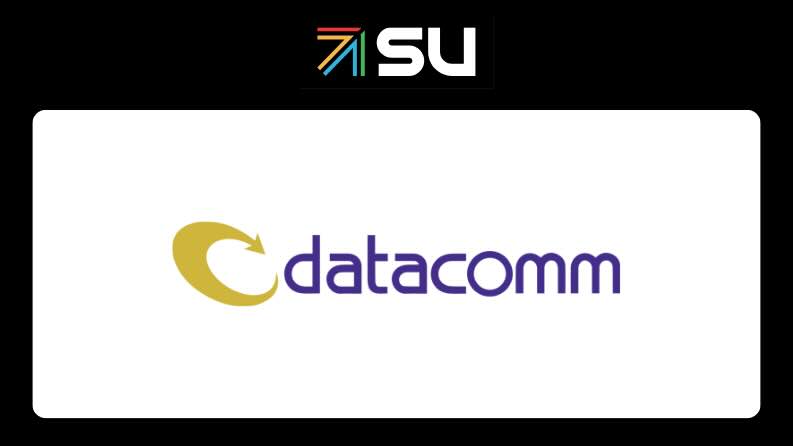Tell us about your public cloud offering.
ELASTX: Henrik Grankvist, chief operating officer
Elastx is a Swedish public cloud provider. We offer two public cloud platforms, one platform-as-a-service (PaaS), powered by Jelastic, and one infrastructure-as-a-service (IaaS), powered by OpenStack. Elastx helps customers fully utilize the benefits of cloud by automating the entire process from code to production, and offer 24-7 monitoring of our customers’ environments.
ENTER: Mariano Cunietti, chief technology officer
Enter is an Italian cloud service provider. We first offered public cloud to a region of Italy in 2013, and in 2014 we opened up to Frankfurt and Amsterdam. We were the first in Europe to run a multi-regional OpenStack public cloud. In late 2015 we were awarded a [contract] for public cloud service by the EU, making us official providers for EU institutions.
INTERNAP: Stephane Antoine, senior manager cloud & platform engineering and operations; Bruno Morel, software development director
In 2011, Internap launched one of the first public clouds based on OpenStack. Since then, it has matured to include bare metal through Ironic and multi-region capabilities with presence in North America, APAC and EMEA. Internap’s public cloud delivers the core OpenStack services to every given customer. We provide the most vanilla deployment possible to facilitate portability to and from other providers and
private deployments.
What made your organization decide to get into the public cloud business?
Cunietti: In 2009, we decided to provide our customers an alternative to VMware and we knew we wanted it to be an all open source service. We started with two virtual private server platforms, and then we took the giant leap of trying to create an alternative to Amazon, both in Italy and Europe. We also provide managed services, so we differentiate ourselves from the big ones in terms of services provided—not only capacity and low prices, but white gloves as well.
Morel: Internap has always tried to be the infrastructure one-stop shop for our clients. From IP connectivity to bare metal hosting, we differentiate ourselves on the completeness of our offering and on our performance. After virtualization became mainstream and widely adopted, we saw a rapid adoption of cloud-based technologies. When we took a deeper look at our clients’ challenges, we realized that a
public cloud implementation would serve them best. So, we set out to build a mutually beneficial solution: a public cloud that was flexible in its use of resources and in its pricing model, with a high performance and a standard API.
When you were building out your public cloud offering, what made you pick OpenStack?
Morel: In 2010, when we built our first “cloud-alike” baremetal product, we had limited (read none) options when choosing the technological stack. OpenStack was still being built by Rackspace and NASA, and most of our clients were asking us, “JSON? Who is Jason?” But by 2012, OpenStack had matured and we faced two options: One, we could continue being haunted by all the struggles we had
faced while maintaining a homemade, closed-source, complex, internal solution. Two, we could embrace OpenStack’s strong and vibrant community, its open source and community-first philosophy and its common sense, battle-tested technologies. Our choice was clear: OpenStack was it.
Cunietti: At the time of our choice, there were few open source alternatives to VMware and to vCloud Director. There was no flexibility, not in the product or in the pricelist. We worried that we would end up being tied to some agreement with someone else deciding our prices. At that time, OpenStack was really at the beginning (Cactus release), but the design was very interesting, and the community participation did the rest. But we strongly believed that collaborative and open source software does better, so we bet on it. We won!
Your cloud has the OpenStack Powered badge. What does that mean for your customers?
Antoine: The OpenStack Powered badge provides our existing and potential customers with the understanding that we are committed to the OpenStack community and to the technology. It reaffirms our pledge to providing a rich experience, as we not only have all three badges (Powered: Platform, Compute & Object Storage), but are capable of providing all our IaaS services within a single standardized API and portal. This also facilitates portability to and from Internap OpenStack-based services and eases management for us. Given that we have a finite pool of resources at our disposal, having the full strength of the OpenStack community allows better progress in developing and launching a wide breadth of features while maintaining high levels of code quality.
The OpenStack community is known for agility and creative problem solving. What was unexpected and what challenges has your team overcome?
Grankvist: Yes, we couldn’t agree more! One unexpected challenge was when we implemented GlusterFS and it turned out to be all wrong for us. We had to migrate away as quickly and painlessly as possible. The OpenStack community responded much quicker (and with impressive technical knowledge) than the paid support subscription model did.
Antoine: The success of our bare metal servers offering and the adoption of existing servers brought to light some Nova scheduling issues that happened with the increasing number of Ironic nodes. We discussed these with various contributors of the Nova project who were quick to help. They reviewed our workaround and provided valuable feedback to help us get our systems back online in a more stable fashion. Eventually, at the last Mid-Cyle Ops Meetup, our engineers met with a broader Nova audience and discussed our challenges in-depth, which we discovered were shared by others. As a result, we now can multiply our scaling by literally eliminating the Nova tasks that Ironic does not care for—and we have since seen drastic improvements in the performance and the scaling of our bare metal management infrastructure.
What are your future predictions for OpenStack public clouds?
Grankvist: This is an interesting topic, but in short, we believe that the vast majority of companies are still running on a legacy infrastructure and are considering moving to a public cloud platform. OpenStack is well positioned, and the container ecosystem is maturing, making it less painful to get started on a public cloud such as OpenStack.
Cunietti: Federation is the key. Especially in Europe, we expect a network of providers to rise as an answer to big monolithic players. It’s a matter of culture, we’re used to it. And we’re already working on it!
Antoine: Currently, containers in OpenStack are mainly focused on the management plane. However, we believe that, to drive widespread adoption, OpenStack needs to better address the whole modern application lifecycle, from container image registry to auto-scalability functionalities. Currently, many competing technologies and vendors complicate companies’ decision-making processes. We see the community’s participation in the Open Container Initiative (OCI) and in other container-focused projects as a key component of a successful adoption strategy. Once adopted, we believe that OpenStack will become the obvious choice for today’s underserved needs, including internet of things, big data and serverless infrastructure. It will deliver a coherent platform, from a simple private cloud control plane to a NFV-able ecosystem that seamlessly manages containers, virtual and bare metal instances for public clouds.
This article first appeared in the print edition of Superuser magazine, distributed at the Barcelona Summit. If you’d like to contribute to the next one, get in touch: [email protected]
Cover Photo // CC BY NC
- Five ways to make your OpenStack Summit talk a standout - October 10, 2018
- Say hello to Kata Containers 1.0 - May 22, 2018
- How to make your OpenStack Summit talk a big success - April 6, 2018

)










